Refund Guaranteed
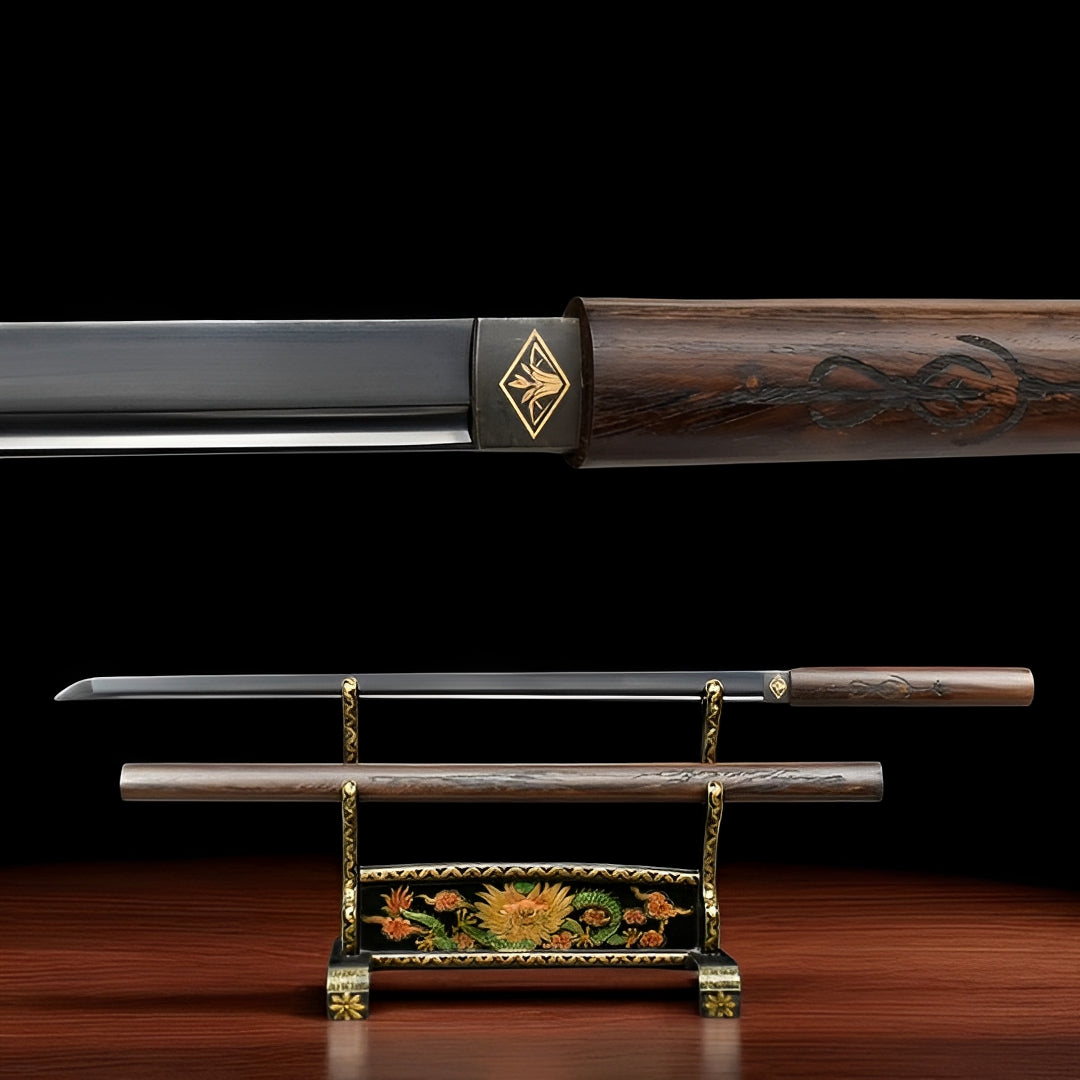
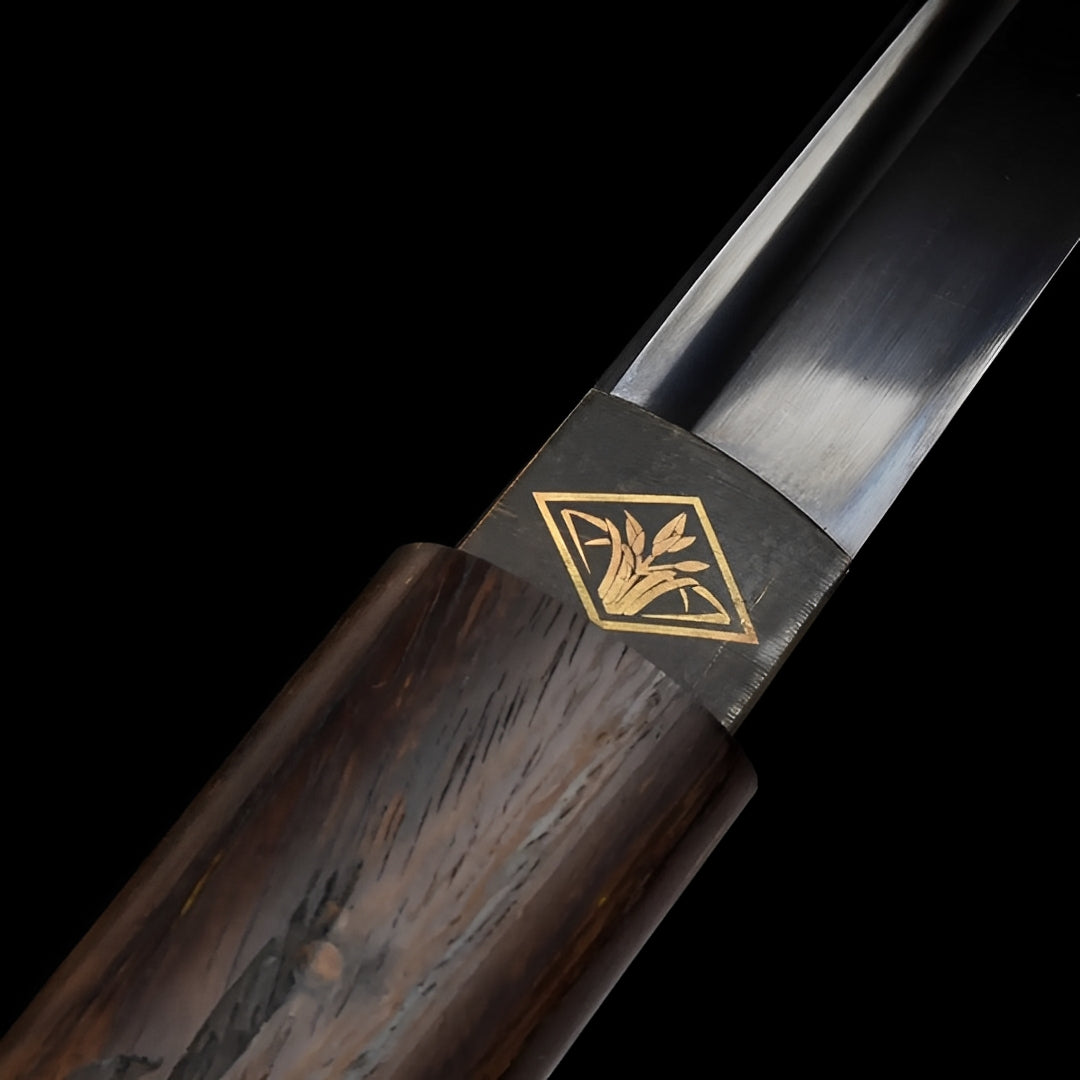
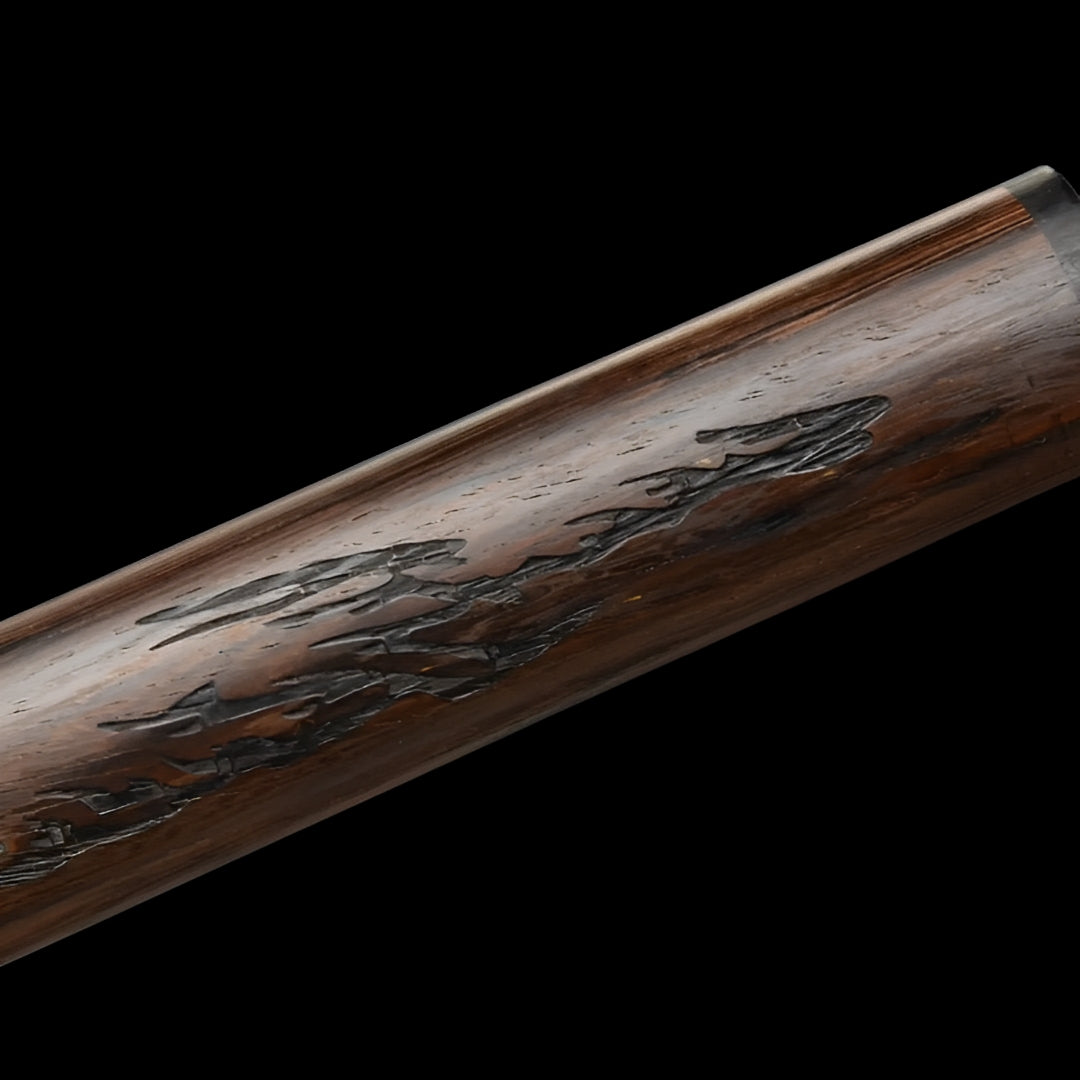
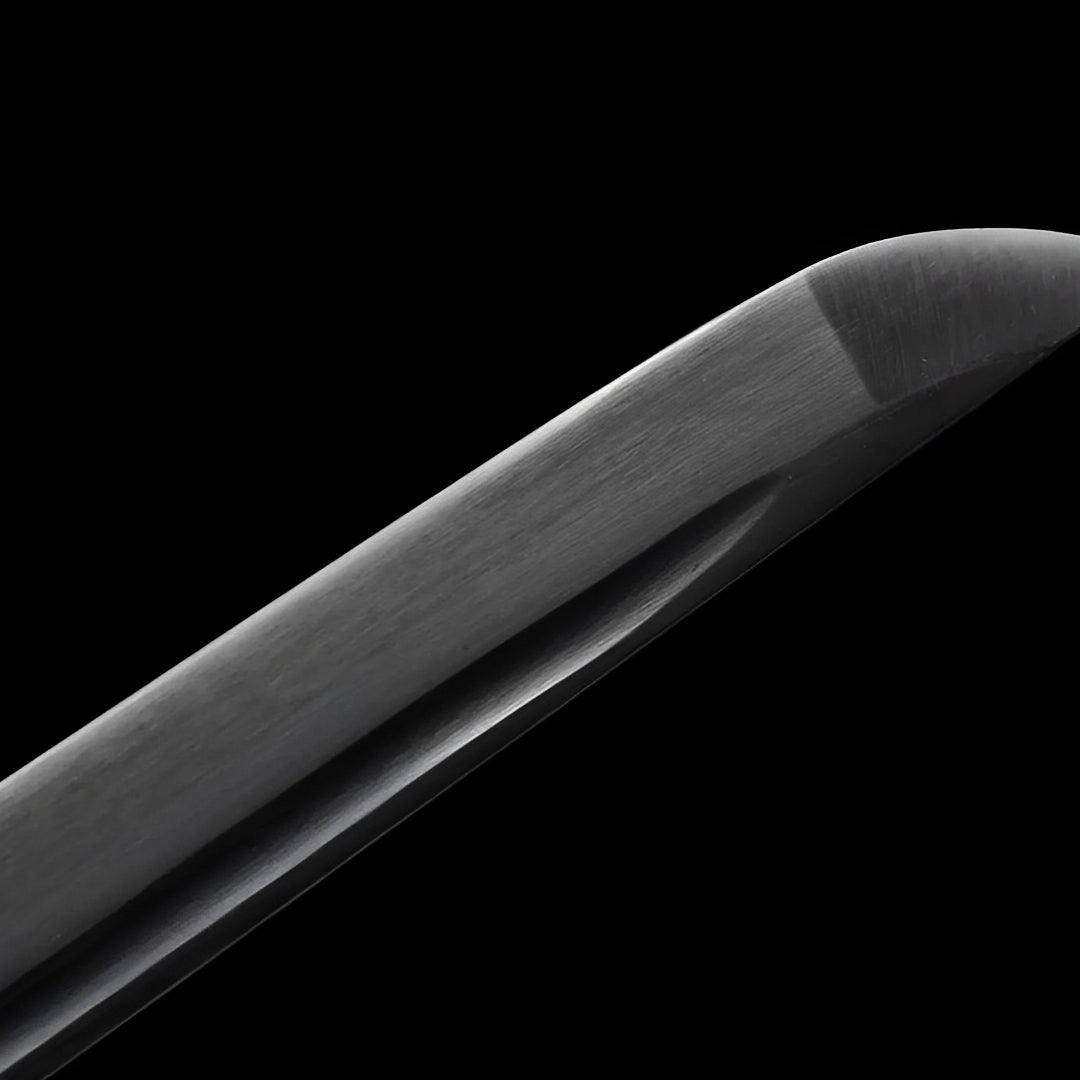
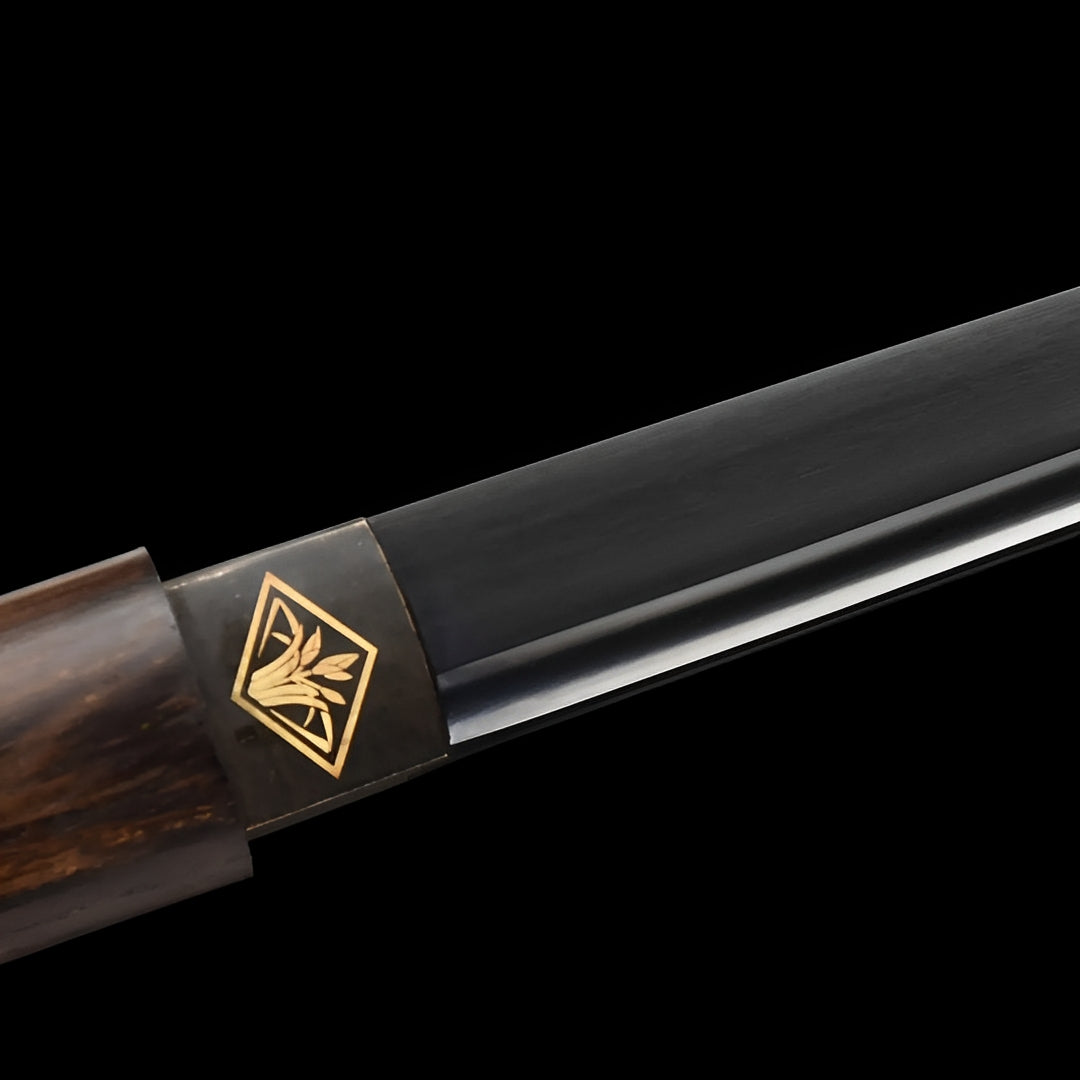
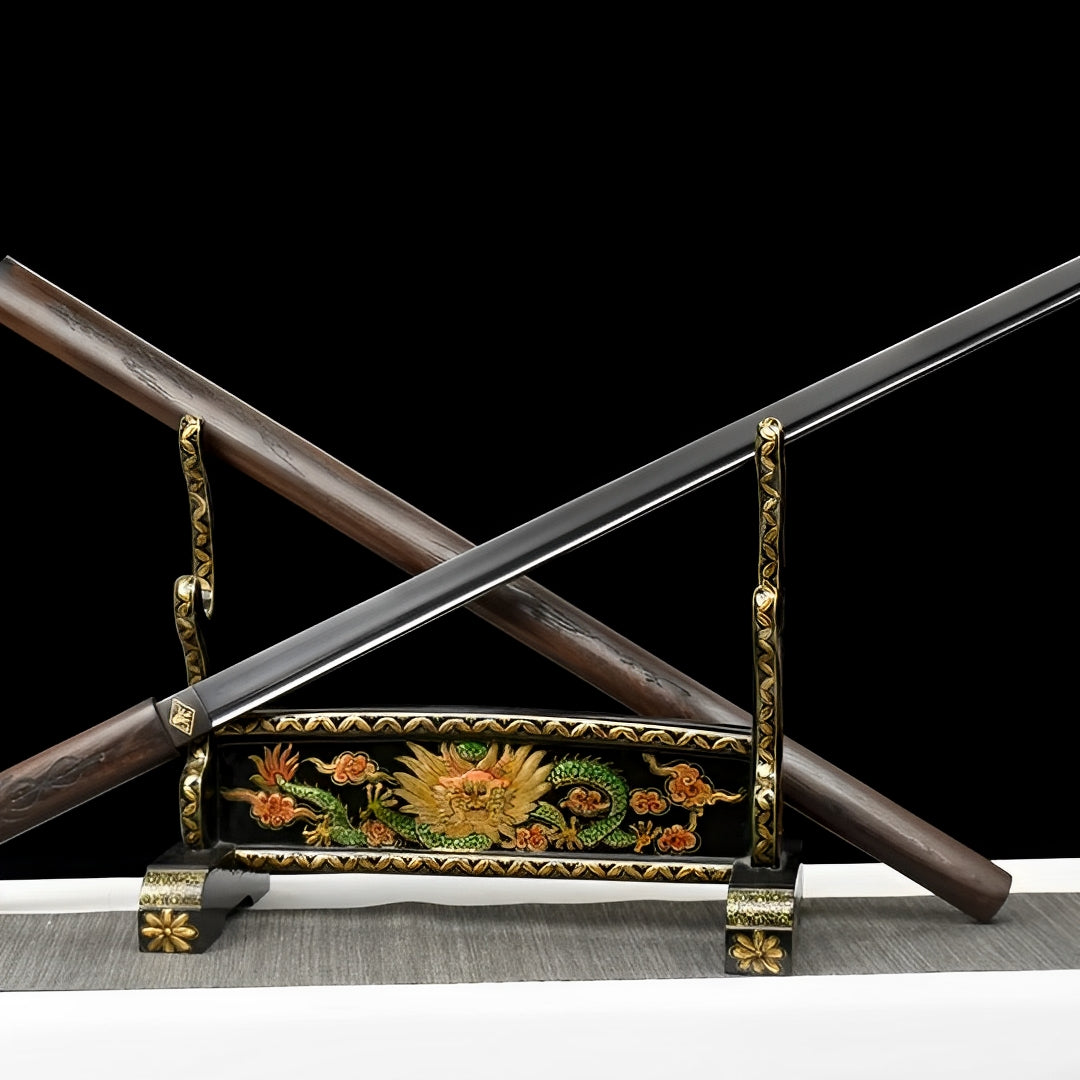
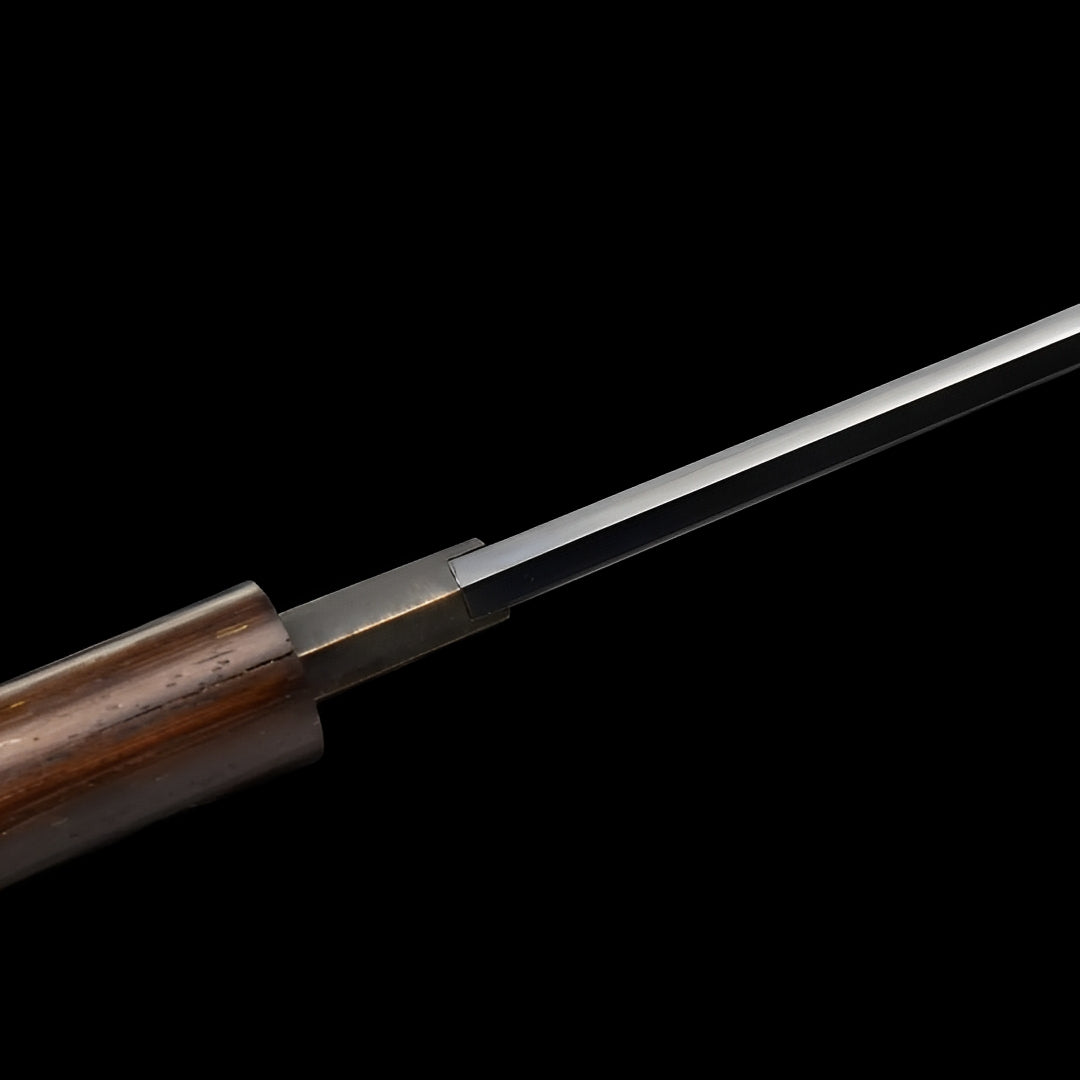
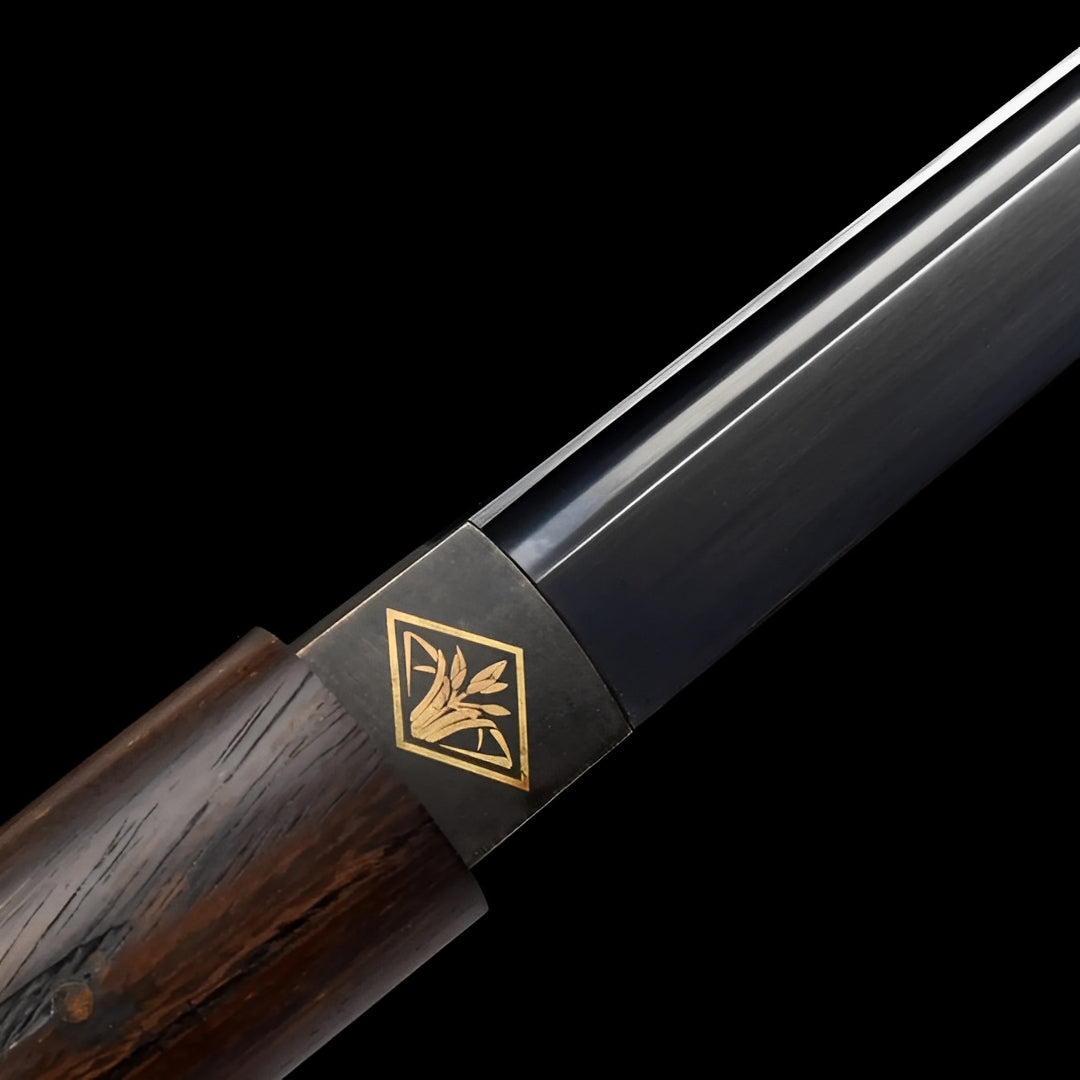
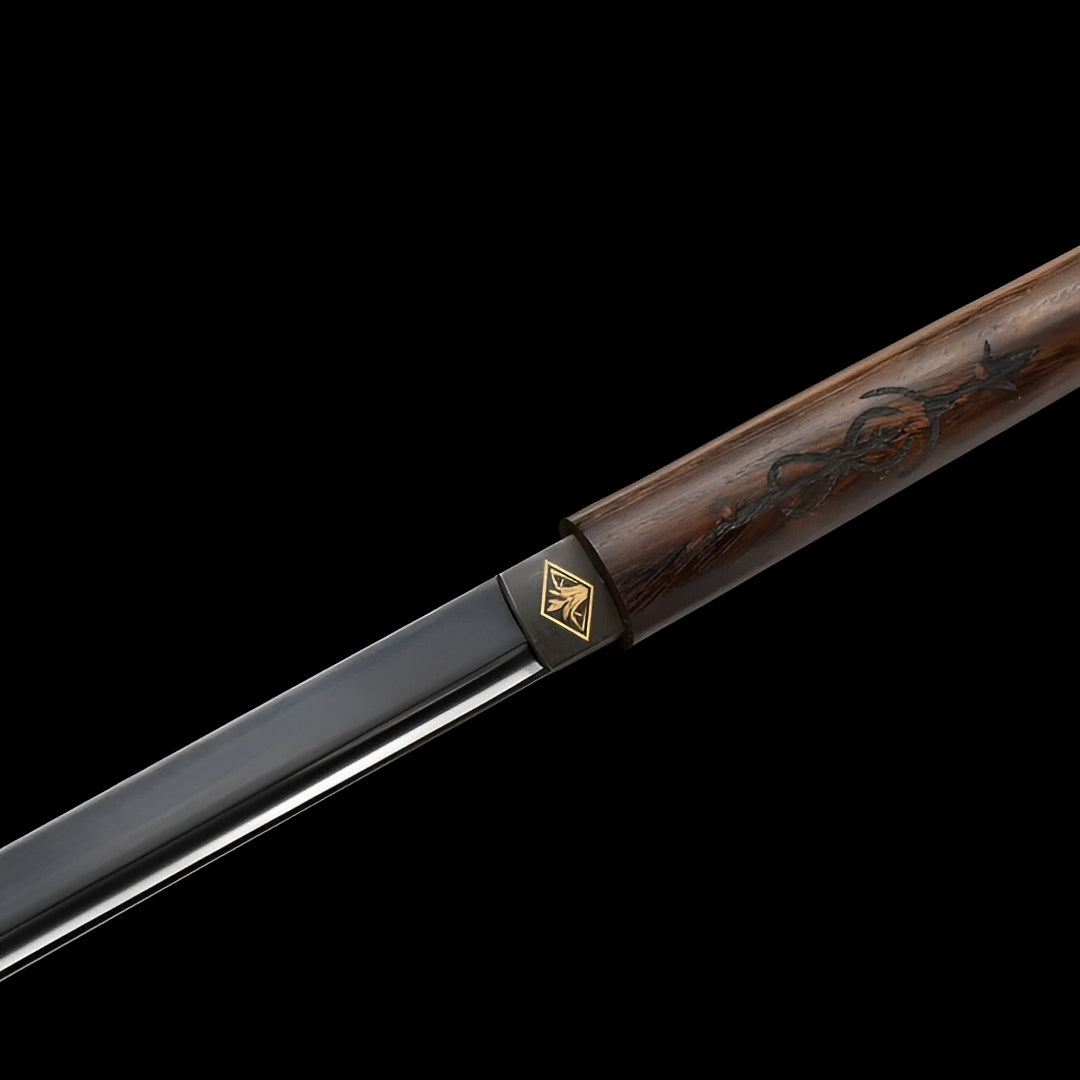
Why choose us
Ships within 48/72h
Forged Blade
Collector Quality
Trusted Globally
Inspired by Japan
Kagehana Ninjato (Manganese Steel) - 影花忍
Popular upgrades
Free Shipping over $250
No Bots, No AI
Refund Guaranteed
Free Shipping over $250
No Bots, No AI
Our team is here to help with any questions or concerns.
We’re always happy to assist you — don’t hesitate to reach out.
Why choose us
Ships within 48/72h
Forged Blade
Collector Quality
Trusted Globally
Inspired by Japan

Kagehana Ninjato (Manganese Steel) - 影花忍
Specifications
- Handcrafted
- Full tang in the handle
- SHARP blade
- Blade: High-manganese steel
- Tsuka and saya made of rosewood
- Habaki made of brass
- Total length: 105 cm
- Blade length: 72 cm
- Blade width: 3.2 cm
- Blade thickness: 0.7 cm
-
Handle length: 30 cm
Kagehana Ninjato - Shadow Flower Stealth Blade
Master contradiction with the Kagehana Ninjato, where darkness blooms beauty and assassin's tools wear artist's touch. This enigmatic ninja sword refuses simplification - matte black saya promises tactical invisibility while natural wood handle erupts with dragon carvings suggesting imperial heritage. Not weapon of crude killers but refined tool of cultured shadow warriors who understood that greatest deception hides sophistication beneath utilitarian surface.
Shadow Garden Paradox
The name Kagehana (影花 - shadow flower) captures this ninjato's essential contradiction. Shadows conceal, flowers reveal. Darkness hides, blossoms announce. Ninja operated in realms where opposites coexisted - humble farmers by day, deadly infiltrators by night. This paradoxical blade embodies that duality through design refusing single identity.
The midnight black saya screams tactical purpose - no reflection betraying position during moonless infiltrations, no shine alerting guards during rooftop traversals. But draw the blade and natural wood handle tells different story entirely. Elaborate dragon relief carving winds around the tsuka, its three-dimensional scales and claws suggesting master woodcarver spent weeks on what ninjas supposedly valued only for function.
This contradiction wasn't accidental but philosophical. Historical ninja weren't faceless assassins but often displaced samurai, ronin seeking employment, or warriors serving daimyo through unconventional means. They possessed education, artistic training, cultural sophistication - all concealed beneath peasant disguises and shadow operations. The Kagehana's hidden beauty mirrors that concealed refinement.
Japanese aesthetics celebrate paradox - wabi-sabi finds beauty in imperfection, mono no aware discovers joy in transience. The shadow flower concept extends this tradition, suggesting that deadliest things can wear gentlest faces, that beneath assassination tools beats hearts appreciating cherry blossoms and moonlight poetry.
The dragon specifically adds layers. Dragons symbolize imperial power, divine protection, wisdom - attributes ninja supposedly rejected through their outsider status. Yet many ninja clans served nobility directly, their "dishonorable" methods protecting lords who publicly condemned such tactics. The dragon carving acknowledges this secret nobility, this shadow aristocracy operating beyond conventional hierarchies.
Straight Blade Tactical Advantage
Unlike curved katana or wakizashi, the ninjato straight blade follows different combat philosophy. The lack of curve optimizes thrusting attacks rather than slashing cuts - critical advantage during tight-space infiltrations where walls, ceilings, and furniture prevent wide swings.
Historical debate surrounds ninjato authenticity - some scholars argue ninja simply used whatever blades they could acquire rather than commissioning specialized straight swords. Others point to tactical advantages justifying custom designs: straight blades sheath and draw faster in confined spaces, the rigid geometry provides superior probing/prying capability for bypassing locks or moving roof tiles, and the utilitarian design costs less than curved masterworks ninja couldn't risk losing during operations.
The Kagehana's straight configuration also suggests influence from Chinese jian (straight double-edged swords) that infiltrated Japan through trade and cultural exchange. Ninja, operating outside conventional Japanese society, freely adopted foreign techniques and tools that rigid samurai culture rejected. This cultural flexibility made them more adaptable, more dangerous.
Modern martial artists studying ninjutsu specifically train with straight blades, citing advantages during multiple-opponent scenarios where rapid direction changes matter more than perfect cutting geometry. The tactical ninjato represents different combat philosophy - pragmatic adaptation over aesthetic tradition, survivability over honor, winning over dying gloriously.
The blade's substantial width near the base tapering to functional point creates optimal strength-to-weight ratio. Unlike katana designed for battlefield dueling, ninja swords needed breaking locked doors, deflecting arrows, and yes - occasionally fighting when stealth failed completely.
Natural Wood Authenticity
The unvarnished hardwood handle tells stories through grain patterns and natural coloration. Unlike lacquered black handles blending with tactical saya, this natural wood ninjato embraces organic beauty that age will enhance rather than diminish.
The dragon carving transforms functional grip into sculptural artwork. Each scale receives individual attention, claws extend with dimensional depth, the serpentine body winds with anatomical accuracy suggesting the carver understood dragon mythology intimately. This isn't decorative afterthought but primary design element competing for attention against the blade itself.
Traditional Japanese woodworking elevated joinery and carving to fine art. Temples featured architectural details requiring years of apprenticeship to execute properly. Applying that expertise to weapon handles acknowledges ninja weren't crude thugs but often possessed skills rivaling samurai - they simply deployed those abilities through unconventional channels.
The natural wood also provides superior grip compared to lacquered surfaces. During rain-soaked infiltrations or after climbing through dusty castle eaves, sweaty hands need texture that polished surfaces cannot provide. The wood grain and carved relief create friction preventing dangerous slippage during critical moments.
Over time, the handle will darken from oil absorption, develop patina showing frequently-gripped areas, essentially creating custom fit reflecting owner's unique hand geometry and holding preferences. This personalization process connects user to weapon through thousands of training hours, the wood becoming extension of the warrior rather than separate tool.
Golden Geometry Tsuba
The brass guard features geometric diamond or shuriken-style cutout - practical design serving multiple purposes beyond hand protection. The angular openwork reduces weight for faster draws while the negative space could theoretically trap and redirect opponent blades during the rare instances ninja engaged in direct sword-to-sword combat.
The golden finish seems counterintuitive for stealth weapons until you consider ninja often operated during festivals, celebrations, or crowded markets where blending meant looking prosperous rather than threatening. A completely black sword screams "assassin" - but one with tasteful brass fittings suggests merchant, low-ranking samurai retainer, or traveler with means to afford decent protection.
The geometric pattern might encode symbolic meaning - certain angles and shapes held significance in esoteric traditions ninja studied alongside martial skills. Kuji-kiri hand signs, mandala meditations, and protective talismans all featured geometric patterns believed channeling spiritual power. The tsuba's design could reference those traditions, transforming functional guard into spiritual focus object.
Quality brass develops beautiful patina - new bright gold mellowing to warm honey tones with darker accents emphasizing the relief details. Collectors debate polishing versus allowing natural aging, both philosophies having merit depending on display preferences and historical accuracy priorities.
Shadow Warrior Collection
This shinobi blade attracts collectors fascinated by ninja history beyond Hollywood fantasy, martial artists training authentic ninjutsu techniques, or anyone appreciating weapons embodying philosophical contradictions rather than single-dimensional purposes.
The Kagehana works magnificently in varied display contexts. The black saya provides visual rest in collections featuring colorful swords, while the dragon handle adds organic warmth preventing the tactical aesthetic from becoming cold or sterile. The included floral stand bridges shadow warrior mystique with traditional Japanese beauty.
Display positioning should honor the contradiction - perhaps partially unsheathed showing where black tactical exterior meets ornate natural wood interior, the reveal itself becoming metaphor for ninja philosophy of hidden depths beneath plain surfaces.
Perfect for collectors specializing in ninja weaponry and equipment, martial artists studying historical ninjutsu schools, Japanese cultural enthusiasts appreciating paradox and complexity, or anyone understanding that most interesting people and objects resist simple categorization, containing multitudes that superficial observation misses entirely.
Care Instructions: Wipe black saya maintaining matte finish essential for tactical aesthetics. The natural wood handle benefits from occasional oil feeding preventing drying and cracking. Brass fittings can be polished or allowed to patina based on preference. Standard blade care applies - oil after handling, proper storage, regular inspection. The carved wood requires gentle cleaning, avoiding harsh chemicals damaging relief details.
Beauty hides in shadows. The Kagehana Ninjato masters both.
Legal Disclaimer
By purchasing from Katana Corp, you acknowledge and agree that:
- You are at least 18 years of age (or the age of majority in your jurisdiction).
- You are solely responsible for verifying and complying with all local laws and import regulations before placing an order.
- Some countries prohibit the importation of swords entirely. Katana Corp is not responsible for orders delayed, seized, or refused by customs authorities.
- All katanas and related products are sold strictly as decorative and display items. They are not intended or certified for combat use.
- Depending on the jurisdiction, swords may legally be considered bladed weapons, subject to specific restrictions or prohibitions.
- Katana Corp disclaims all liability for any injury, damage, or legal consequences resulting from misuse, abuse, or unlawful use of its products.
For full details, please refer to our Terms of Service.
Care & Maintenance
To maintain your katana's appearance and performance over time, we recommend:
- Regularly wiping the blade with a soft cloth to remove fingerprints and moisture.
- Applying a light coat of choji oil to prevent rust (for carbon steel blades).
- Storing the sword in a dry place, preferably inside its saya.
- Avoiding direct contact with hard surfaces to preserve sharpness and finish.
For more care tips, check our full maintenance guide in the FAQ section.
Behind the Blade
Every katana we offer carries the essence of centuries-old craftsmanship.
More than just a weapon, the katana symbolizes discipline, honor, and mastery.
Our artisans draw inspiration from traditional forging methods to ensure each blade reflects the spirit of the samurai — strength, precision, and soul.
Owning one is not just about aesthetics — it’s about carrying a piece of that legacy.
User Experience
This katana is designed to offer a perfect balance between blade and handle.
Its ergonomic tsuka (handle) allows a secure two-handed grip, while the weight distribution ensures smooth, fluid movement.
Whether for training, display or cutting practice, handling feels natural and precise.
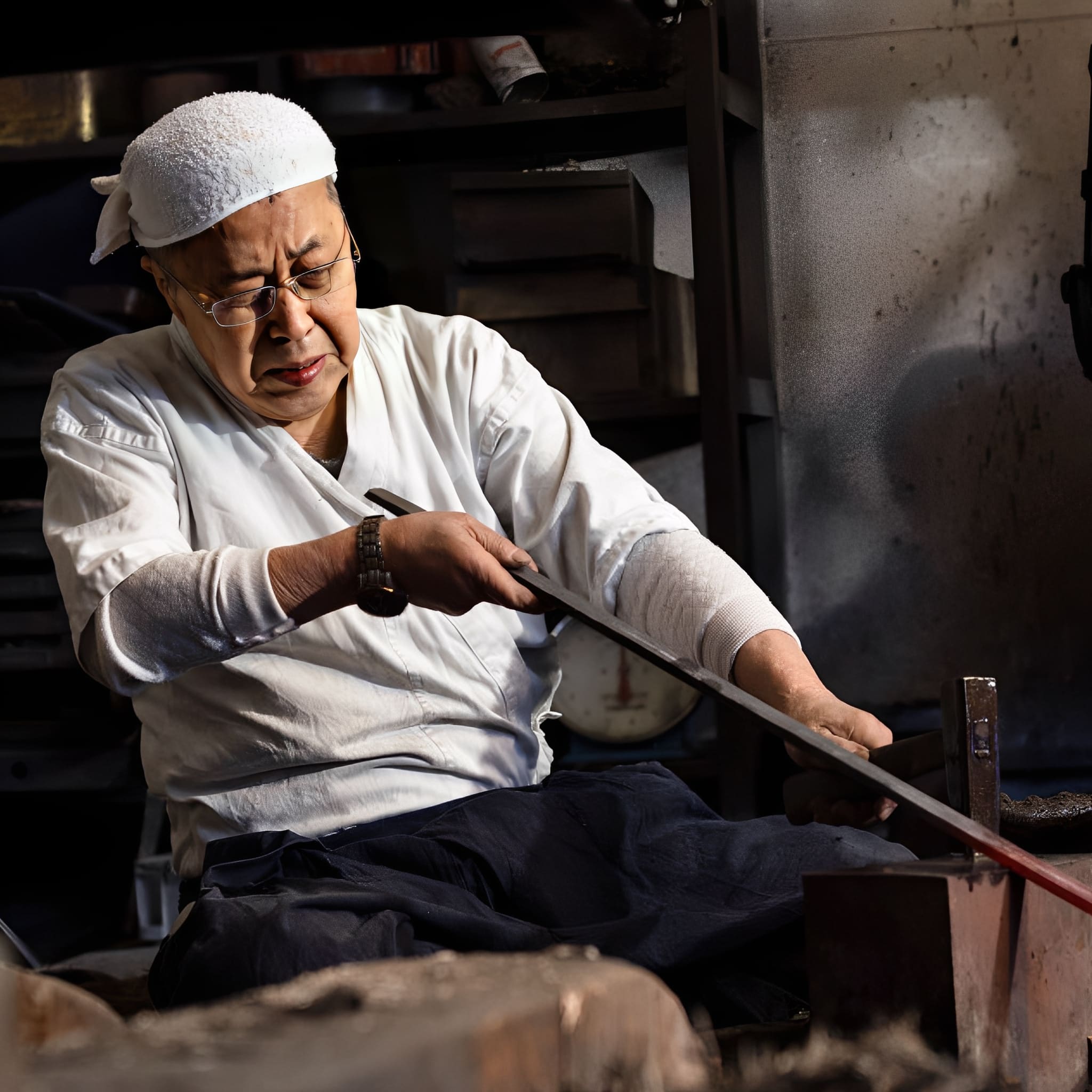
The Art of Traditional Forging
Each katana we craft is born from centuries of samurai tradition.
Our master smiths shape every blade by hand, folding the steel to achieve unmatched strength, flexibility, and beauty.
This time-honored process is not just about creating a weapon? it’s about preserving a legacy of discipline, honor, and artistry.

Materials Chosen Without Compromise
We select only the highest-grade steels and authentic fittings to ensure every katana is both a masterpiece and a reliable companion.
From the flawless hamon line to the perfectly balanced tang, each detail is carefully inspected to meet the highest standards of performance and aesthetics.
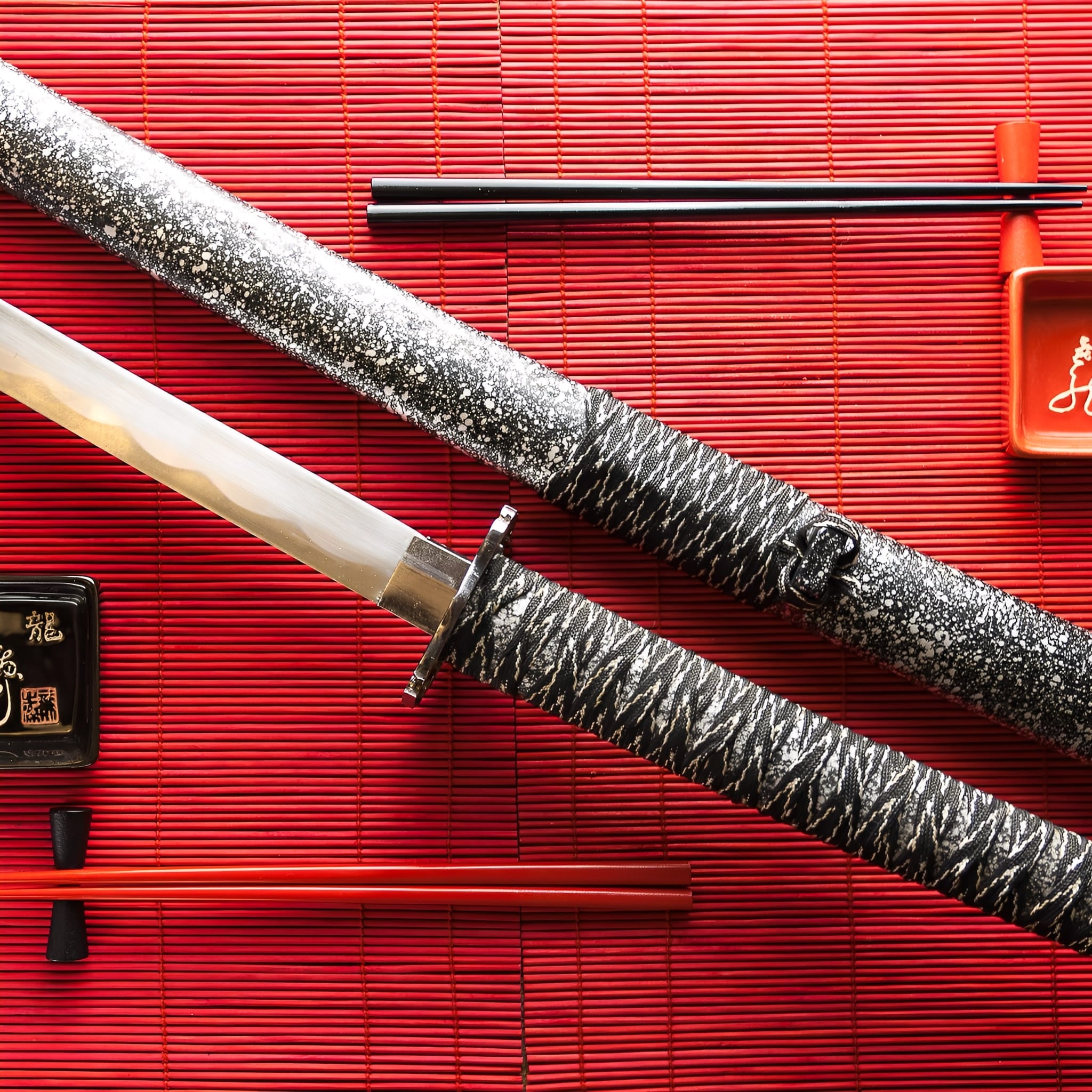
More Than a Sword, A Lifelong Legacy
Owning a handmade katana is an experience that goes beyond the blade itself. It’s holding history, tradition, and craftsmanship in your hands.
Whether displayed as a work of art or wielded with precision, your katana will stand as a symbol of timeless skill and dedication for generations to come.
-
Key Destinations
United States: 5–7 days
Canada: 5–7 days
Australia: 6–9 days
Denmark: 4–6 days
Netherlands: 3–5 days
Sweden: 4–6 days
Switzerland: 3–5 days
Finland: 5–7 days
Singapore: 6–8 days -
Central European Partners
France: 2–3 days
Germany: 3–5 days
Spain: 4–6 days
Italy: 4–6 days
Belgium: 3–5 days
Austria: 4–6 days
Ireland: 4–6 days
Poland: 4–6 days
Portugal: 4–6 days -
Extended EU Network
Czechia: 4–6 days
Hungary: 4–6 days
Slovakia: 4–6 days
Slovenia: 5–7 days
Romania: 5–7 days
Bulgaria: 5–7 days
Croatia: 5–7 days
Serbia: 5–7 days
Estonia: 5–7 days
Latvia: 5–7 days
Lithuania: 5–7 days
Luxembourg: 3–5 days
Greece: 5–8 days -
FAQ’s
Visit our FAQs page to find answers to common questions.